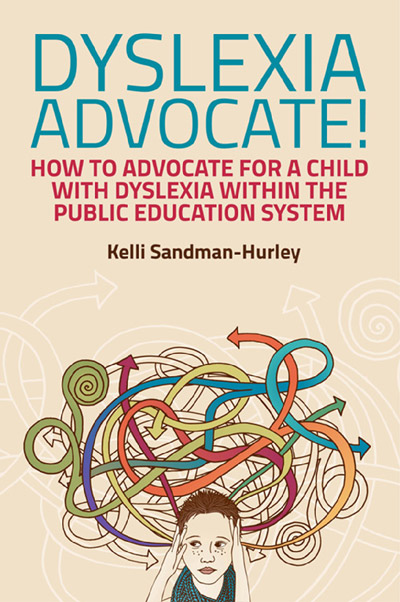This article was originally published in Dystinct Magazine.
“I always viewed myself as the stupid slow kid who just couldn’t read or spell. I had minimal self-worth from an academic perspective, which quickly spilled over into the personal areas of my life, which in turn affected many of the choices I made, many resulting in negative behaviors” ~ Stacey
Recently I was casually talking with a special education teacher at an event that both of our kids were attending. It was a social event, so we weren’t there to talk about work, but it came up anyway. We were talking about IEP meetings and she told me a story about one of her students, years back, who had difficulty remembering what she learned, so not necessarily dyslexia-related, but what she said next really stuck with me and might help us understand why advocating is so hard. She said, “I just wish the parents would accept her for who she is.” Although she didn’t come out and say it, the implication is that we are supposed to allow the schools to do what they are doing, stop questioning what they do, and allow our students to underachieve because ‘that is just who they are.” When we apply that rationale to students with dyslexia this means we are supposed to accept instruction that is not appropriate, which then leads to a lifetime of reading difficulty and spelling anxiety, because that is who they are? I don’t think so. Parents have to reject that rationale and advocate when they suspect their child has dyslexia. Here’s how to start.

Trust Your Instinct and Bring Receipts
When you’re parental/caregiver instinct is kicking and telling you that something just isn’t right, listen to it, no one knows your child like you do. When you have done your research and everything is pointing to dyslexia, you are probably right. Once you’ve done that, you need to arm yourself with the information you need to make your case – you need to bring the receipts to back up the instincts.
Those receipts include writing samples, testing (school or outside), reports cards (with special attention paid to the comments from the teachers), parent observations (how long does it take to complete homework, etc.), classroom observation, observations from anyone working with the student outside of the classroom and the student’s own words (What do you like about school, what don’t you like, record the student reading a grade-level passage to read at a meeting). Everything listed above is permissible at an IEP meeting when determining if someone qualifies for services and or initial testing for services.
Be Ready to Rebut the Rebuttals
Once you have collected all the information you need (the receipts) to request services or an assessment you have to be prepared to respond to the most common comments that are intended to stall the services you are requesting.
A few examples are:
“Don’t worry, he’ll grow out of it.” – This statement seems innocuous enough, but after interviewing dozens of adults, I can safely say that waiting is one of the most detrimental things we can do to a child with dyslexia. Children, even our youngest students, know when they are behind their peers. Every year that they are left without appropriate instruction is another year they internalize their lack of progress as their own fault and start to label themselves as stupid. So, when you hear this statement you might start by asking for the research they are using to support this opinion and also ask to see the school policy that states waiting is an appropriate response to your request.
“No, she’s fine, she just needs to find a book she really likes.” – I have heard a teacher say more than once that a student who doesn’t like to read is a student who has not found the right book. When you hear this your response should be something like, “If my child could read well, he would. He is not trying to fail at this. He’s not trying to be difficult.” You can then remind them that there is no such thing as a reluctant reader. Reluctance means that they do not want to try to read, they have tried…someone has to teach them.
“Have you tried reading more to your child?” This might require no more than an eye-roll from you to get your point across. But if that doesn’t work, you can remind the team that a comment like this is actually blaming the student and again, they are not trying to struggle with reading and spelling.
“We don’t assess or do anything until they are in third grade.” This very common comment is patently false. In addition, if you are told that the school wants to try other interventions (Response to Intervention (RTI)) all you really need to do in this situation is ask for the school policy, and the IDEA verbiage, that supports the denial of testing until third grade. Here is the link to a memo from the US Department of Education that you can share with the team in this situation: https://www2.ed.gov/policy/speced/guid/idea/memosdcltrs/guidance-on-dyslexia-10-2015.pdf
“Oh, we don’t use the word dyslexia – that is just an umbrella term for all kinds of things.”
Again, this is patently false. You can remind the team in this situation that dyslexia has been included in the IDEA since 1974. It is a qualifying condition under Specific Learning Disability (SLD). You should always carry a copy of the SLD definition with you:
Sec. 300.8 (c) (10)
(10) Specific learning disability—
(i) General. Specific learning disability means a disorder in one or more of the basic psychological processes involved in understanding or in using language, spoken or written, that may manifest itself in the imperfect ability to listen, think, speak, read, write, spell, or to do mathematical calculations, including conditions such as perceptual disabilities, brain injury, minimal brain dysfunction, dyslexia, and developmental aphasia.
(ii) Disorders not included. Specific learning disability does not include learning problems that are primarily the result of visual, hearing, or motor disabilities, of intellectual disability, of emotional disturbance, or of environmental, cultural, or economic disadvantage.
Uncover the Bias
School meetings can be tense. Emotions can run high. But before you even look at scores and talk about services you should ask: “Why do you think my child is under achieving in reading and spelling?” What you hear next will tell you what you need to do next. You don’t want scores and percentiles, you are listening for their opinion. If the school responds in a way that gives you confidence that they understand dyslexia, that they acknowledge they need to be taught the structure of the English language in an explicit and multisensory way and the student is capable of learning, then you can assume, for now, that your child might be in good hands. If the response is vague, blames the child, blames you, or suggests that they want to ‘try some things’ or ‘they’re not that behind’ or as my friend suggested above, ‘you just need to accept your child as they are’- then you have uncovered a bias. The bias is that it’s not really dyslexia, they believe it’s the child, or you, or a lack motivation, or effort, or perhaps the child has reached their potential already and you just need to accept it. If this is the case, you have some educating of the team to do. You can start by showing them this short, informative video:
What is Dyslexia: https://youtu.be/zafiGBrFkRM
Then share these books:
- Dyslexia Advocate
- Overcoming Dyslexia
- Dyslexia and Spelling
- The Dyslexia Empowerment Plan
- Proust and the Squid
Keep Your Eye on the Ball
Getting an assessment and services for your child is just the start of your journey. You are now not just a parent, but a manager of progress. If a child is not making progress, they know it. They internalize it. Each time they try a new program and are unsuccessful, they blame themselves. So, it is up to you to monitor your child’s progress and raise red flags when you think it is insufficient. The best way to avoid a lack of progress is to avoid inappropriate instruction in the first place, which you hopefully did when you uncovered any bias that might be present. What does inappropriate instruction look like? It’s usually a ‘little of this and a little of that. If there are guessing strategies being taught – that’s inappropriate. If they are mainly relying on memory strategies – that is inappropriate. If they are only reading, and rereading passages, that’s great for fluency, but it is inappropriate as a stand-alone instructional strategy.
Make sure to check in with your child and ask them if it’s working. You can also observe their instruction or ask someone else to (advocates can do this) to determine if it’s being delivered effectively. The general education classroom teacher might give insight into whether or not your child is showing progress in regular classroom activities. And remember, you are part of the IEP team, so you can call a meeting at any time to discuss instruction and progress, or lack of progress.
This is enough to start your journey. Try to remember to try to silence the noise that might be thrown your way and be informed enough to know how to respond to it. Don’t underestimate the importance of your role as an advocate in your child’s life. Don’t overestimate the education system’s ability to know how to help a child with dyslexia without guidance from you. As you begin to advocate for your child, remember that advocating for a student with dyslexia is really, really hard, but being a student with dyslexia is much harder.





